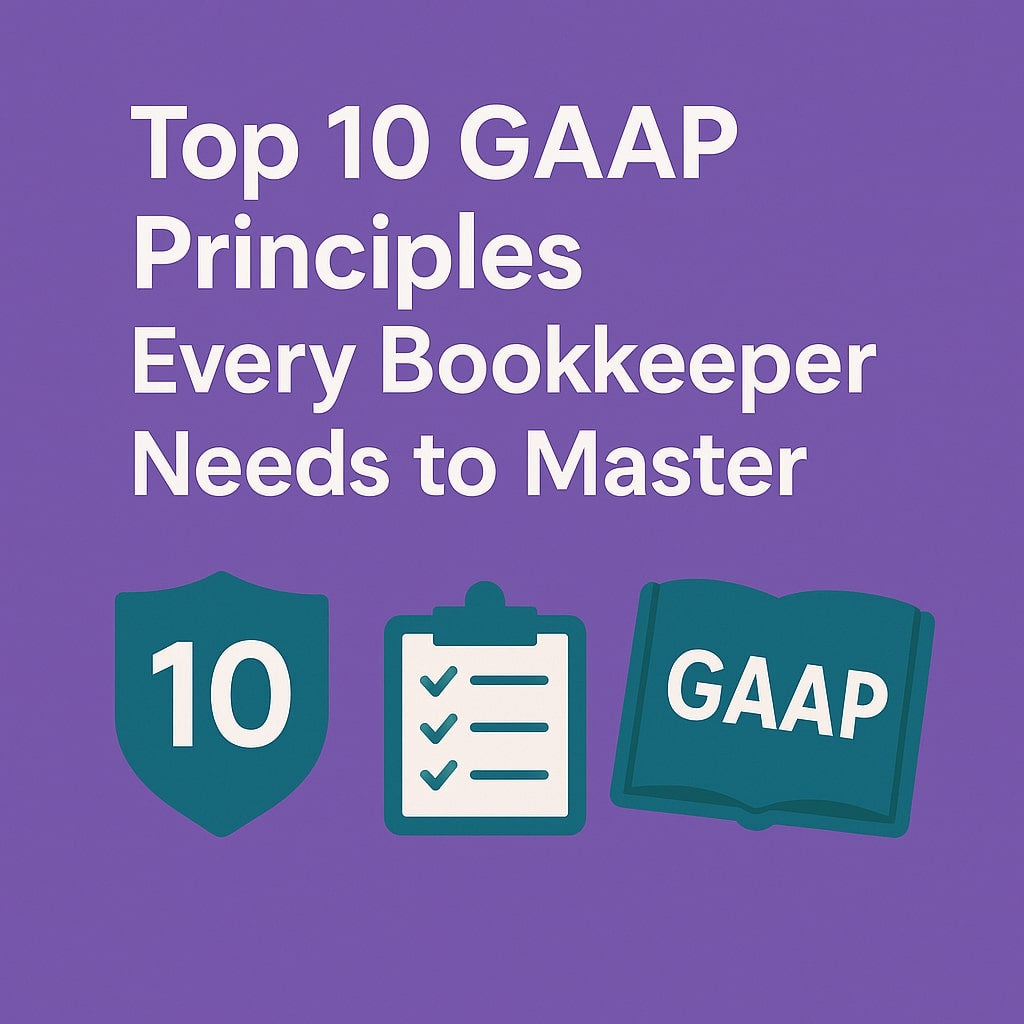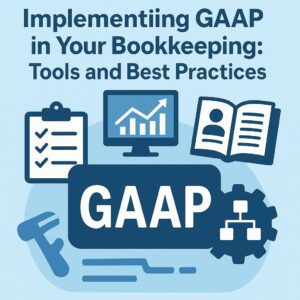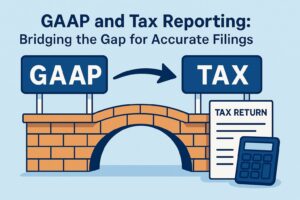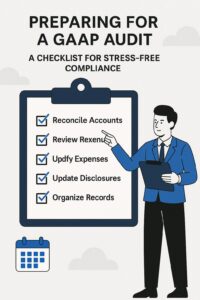Article 2: “Top 10 GAAP Principles Every Bookkeeper Needs to Master”
(Meta Description: Discover the 10 essential GAAP principles every bookkeeper should know. Learn how to apply them for accurate financial reporting and compliance. Perfect for accounting professionals!)

Top 10 GAAP Principles Every Bookkeeper Needs to Master
GAAP (Generally Accepted Accounting Principles) forms the backbone of transparent and consistent financial reporting in the U.S. For bookkeepers, mastering these principles isn’t just about compliance—it’s about delivering reliable financial insights that stakeholders trust. In this guide, we’ll break down the 10 most critical GAAP principles, explain their importance, and share actionable tips to implement them in your workflows.
Why GAAP Principles Matter for Bookkeepers
GAAP ensures that financial statements are:
Comparable: Investors can evaluate companies side-by-side.
Consistent: Trends are visible over time.
Transparent: No hidden liabilities or inflated revenues.
Ignoring GAAP can lead to audits, legal penalties, or loss of investor confidence. Let’s dive into the principles you need to know.
1. The Accrual Principle
What It Is: Record revenues and expenses when they’re earned or incurred, not when cash is exchanged.
Why It Matters: Accrual accounting reflects a company’s true financial health.
Example:
Cash Basis: A $5,000 invoice paid in January is recorded in January.
Accrual Basis: The $5,000 is recorded in December (when the service was completed).
Bookkeeping Tip: Use software like QuickBooks to automate accrual entries.
2. Revenue Recognition Principle
What It Is: Recognize revenue when it’s earned, not when payment is received.
Why It Matters: Prevents overstating income and aligns with delivery of goods/services.
Example:
A construction company completes 50% of a project in 2024. Under GAAP, 50% of the total contract revenue is recognized in 2024, even if payment arrives in 2025.
3. Matching Principle
What It Is: Match expenses to the revenues they help generate.
Why It Matters: Ensures accurate profit margins by linking costs to income.
Example:
If you spend $1,000 on materials for a client project in March, record the expense in March—even if you pay the supplier in April.
4. Full Disclosure Principle
What It Is: Disclose all relevant financial information in footnotes or supplementary schedules.
Why It Matters: Stakeholders need context (e.g., pending lawsuits, lease obligations).
Example:
If your business faces a lawsuit that could impact finances, detail the risk in the financial statement footnotes.
5. Consistency Principle
What It Is: Use the same accounting methods across reporting periods.
Why It Matters: Ensures comparability year-over-year.
Example:
If you switch from FIFO to LIFO inventory valuation, you must explain the change and its impact in the notes.
6. Going Concern Principle
What It Is: Assume the business will continue operating indefinitely (no plans to liquidate).
Why It Matters: Affects how assets/liabilities are valued (e.g., no fire-sale pricing).
Red Flag: If a company might shut down, this must be disclosed.
7. Cost Principle
What It Is: Record assets at their original purchase cost, not current market value.
Why It Matters: Prevents overvaluing assets (e.g., a building bought for 200𝑘𝑠𝑡𝑎𝑦𝑠𝑎𝑡200kstaysat200k on the books).
Exception: Marketable securities are recorded at fair value.
8. Materiality Principle
What It Is: Only report information that impacts decision-making.
Why It Matters: Avoids cluttering statements with insignificant details.
Example:
A 10𝑒𝑟𝑟𝑜𝑟𝑖𝑠𝑛’𝑡𝑚𝑎𝑡𝑒𝑟𝑖𝑎𝑙𝑓𝑜𝑟𝑎10errorisn’tmaterialfora1M revenue business, but a $50k error is.
9. Conservatism Principle
What It Is: When in doubt, report expenses/losses immediately but delay recognizing gains.
Why It Matters: Prevents over-optimistic financial reporting.
Example:
If a client might default on a $20k invoice, record the potential loss as a bad debt expense.
10. Objectivity Principle
What It Is: Financial data must be unbiased, verifiable, and based on evidence (not opinions).
Why It Matters: Builds trust in financial statements.
Example:
Use invoices, contracts, or bank statements—not estimates—to record transactions.
How to Implement These Principles in Your Bookkeeping
Invest in GAAP-Compliant Software: Tools like QuickBooks, Xero, or FreshBooks automate accruals and disclosures.
Stay Updated on FASB Changes: Follow FASB newsletters or webinars for rule updates.
Review Financial Statements Quarterly: Check for consistency, missing disclosures, or errors.
Common GAAP Compliance Challenges (and Fixes)
Challenge
Solution
Misclassifying expenses
Use detailed chart of accounts.
Overlooking footnotes
Create a disclosure checklist.
Mixing cash/accrual methods
Train staff on GAAP basics.
FAQs About GAAP Principles
Q: Do nonprofits follow GAAP?
A: Yes! Nonprofits use GAAP but also follow FASB’s nonprofit-specific guidelines.
Q: Can I use GAAP for tax reporting?
A: No—tax reporting follows IRS rules. Reconciling GAAP and tax filings is key (read our GAAP vs. Tax-Basis Accounting guide).
Q: What happens if I ignore GAAP?
A: Risks include loan denials, legal issues, and loss of investor trust.
Final Thoughts
Mastering GAAP principles is non-negotiable for bookkeepers who want to deliver accurate, compliant financial reports. By integrating these rules into your workflows and leveraging technology, you’ll save time, reduce errors, and position yourself as a trusted advisor to clients.
(Word count: 1,450 | Primary keywords: GAAP principles, bookkeeping, accrual accounting)
Pro Tips for SEO & Readability:
Internal Linking: Link to related articles (e.g., “GAAP vs. Tax-Basis Accounting”).
Semantic Keywords: Include terms like “financial reporting,” “FASB,” and “compliance.”
Mobile Optimization: Use short paragraphs and avoid walls of text.




